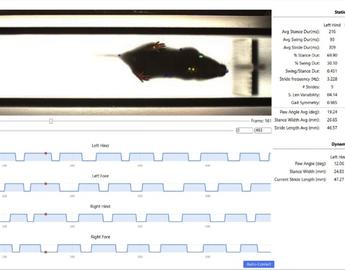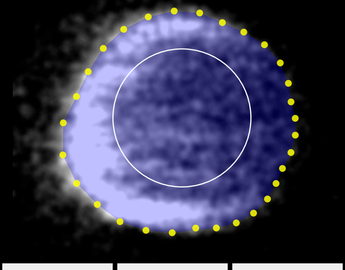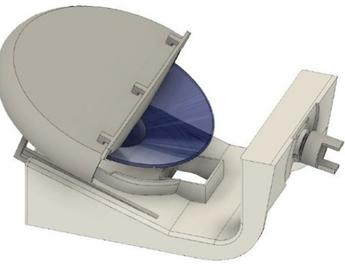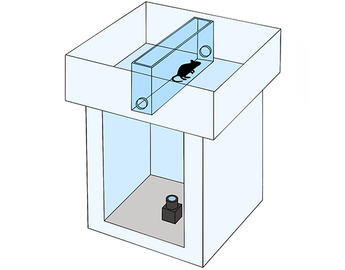Equipment and fees
The facility is designed to house state-of-the-art programs in approximately 2400 square feet with separate facilities for rat and mouse research.
Equipment and facilities
Currently, researchers have access to the following equipment and facilities:
-
In vivo imaging, photometry, and electrophysiology equipment
-
Laser, power, and sensor equipment
-
Designated rat and mouse surgical suites
-
Workspace for trainees to analyze data (including 3 super-computers for large dataset processing)
-
Behavioural monitoring and assessment equipment
-
Animal climate-controlled bio-cabinets and peripherals, such as equipment carts and other tools
-
Half-way house facilities
-
Rooms that are allocated for long-term use and certified for Biosafety Level 2
-
Specialized animal care provided by the Animal Resource Centre in the long-term rooms
-
Noise abatement built-in to all rooms
-
Miniature microscopes from Inscopix; platform staff attended a hands-on training course and Inscopix technical staff visited the optogenetics team to assist with the first series of implantations
-
A wireless optogenetics system from Neurolux was purchased, implemented, and is currently in use
-
Three single fibre photometry systems. The team developed and tested the systems in various configurations and the rigs are now functional and heavily used to produce data
-
LED light sources, lasers, and stimulator units for in vitro and in vivo use
-
A motorized and a manual stereotaxic rig and tools for mouse surgeries
-
A virtual reality stage for head-fixed mice
Custom-made solutions
Operand conditioning chamber for mice
Lower body negative pressure chamber for mice, rats, and mini pigs.
An analysis toolbox for fiber-photometry and miniscope recordings
Hole board apparatus, y-maze, grimace box
Plugins, macros, others
ImageJ/FIJI StackRoi: Automatic duplication of ROIs in a image stack.
WholeBrain WholeBrainSorter: Master spreadsheet with cell counts from all brain regions.
Deeplabcut: Segmentation of behavioral data (soon).
Workshop tools
3D printers
CO2 laser cutting machine
Rotary tool kit
Soldering station
Workshop micro-controllers and sensors
Arduino
Raspberry Pi
Nordic semiconductor
High-speed cameras, thermal camera, accelerometer, etc.
General Behavior
Open Field
General activity, thigmotaxic behaviour, anxiety, exploration (Standard Protocol).
Example of original research and topical review
Basso Mouse Scale (BMS)
General locomotion (Standard Protocol and original publication).
Cognition/Learning and Memory
Morris Water Maze
Spatial memory and associative learning (Standard Protocol).
Example of original Facility supported research and topical review.
Radial Arm Maze
Working and reference memory, associative learning, and spatial memory (Standard Protocol).
Example of original research and topical review.
Novel Object Recognition
Novelty and object recognition (Standard Protocol).
Example of original Facility supported research and topical review.
Cued/Contextual Fear Conditioning
Example of original research and topical review.
Barnes Maze
(Standard Protocol). Topical review.
Emotionality
Forced Swim Test (Porsolt)
Depression, learned helplessness, coping with stress (Standard Protocol). Example of original Facility supported research and topical review.
Elevated Plus Maz
Anxiety (Standard Protocol).
Example of original Facility supported research and topical review.
3-Chambered Sociability Test
Sociability, social memory and novelty (Standard Protocol).
Example of original Facility supported research and topical review.
Movement Analysis and Sensorimotor Behavior
RotaRod
Balance and bilateral coordination (kindly donated by Dr. Cory Toth) (Standard Protocol).
Example of original Facility supported research and topical review.
Beam Traversal (various sizes)
Skilled locomotion and balance (Standard Protocol).
Example of original research and topical review.
Horizontal Ladder
Skilled locomotion, coordination, and motor learning (Standard Protocol).
Example of original Facility supported research and topical review.
DigiGait
Gait kinematics (Standard Protocol).
Example of original research and topical review.
Grip Strength
Strength and strength/weight ratio (Standard Protocol).
Example of original research and topical review.
Dynamic Plantar Aesthesiometer (DPA)
Mechanical sensitivity (kindly donated by Dr. Cory Toth) (Standard Protocol).
Example of original Facility supported research and topical review.
Vicon (Nexus)
Kinematic analysis of gait and locomotion (topical review).
Hot Plate Test
Thermal pain sensitivity (kindly donated by Dr. Quentin Pittman).
Example of original research and topical review.
Optical, Optogenetic, and Electrophysiological Tools
Miniature Cameras
Four Inscopix nVista head mounted mini-scope systems for targeting, visualizing, and recording population-scale neural activity with cellular resolution in pre-determined cell types (https://www.inscopix.com/products/nVista). See for example: https://www.inscopix.com/about/publications.
Fibre Photometry
One fiber photometry set-up with a TDT RZ5P processor running TDT synapse software (http://www.tdt.com/fiber-photometry-rz5p.html). This system uses two modulated channels of light, one 470 for GCamP and one 405nm for motion artifact control. The light is modulated/demodulated to filter out ambient light and evaluate overall fluorescence activity of a fluorescent indicator (http://dx.doi.org/10.1016/j.cell.2015.07.014).
Optogenetics
Photostimulation in vivo using 473 and 593 nm lasers to stimulate or inhibit targeted cell populations. The light is delivered through an optical fibre directly into the brain. HALO will soon have a complete NeuroLux Optogenetics System which will also users to photostimulate wirelessly. The system provides the complete hardware and software system along with a simple interface to allow users to adjust frequency and pulse duration, and to apply burst mode that is compatible with a TTL input system (http://www.neurolux.org/product-overview/product-information/).
In vivo Electrophysiology
One 32 channel system for in vivo electrophysiology from Spike Gadgets for neural recording from freely-moving mice that uses a hybrid approach that interfaces with an open-source software platform.







